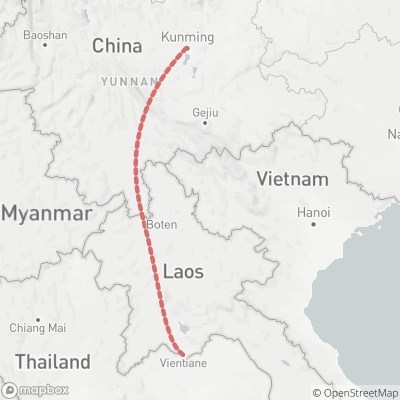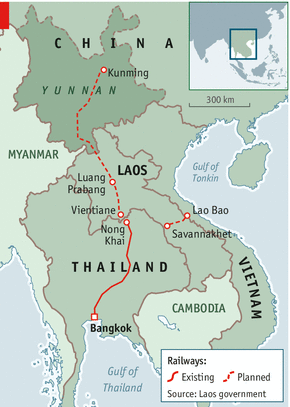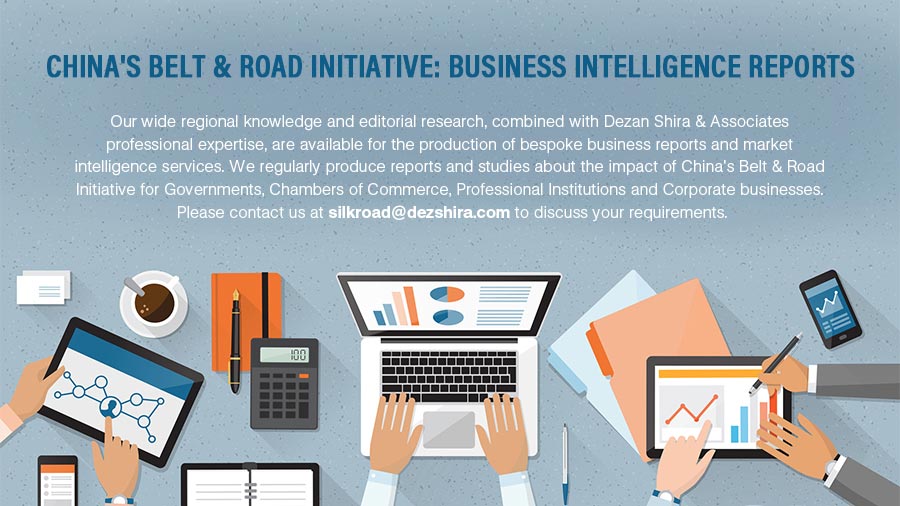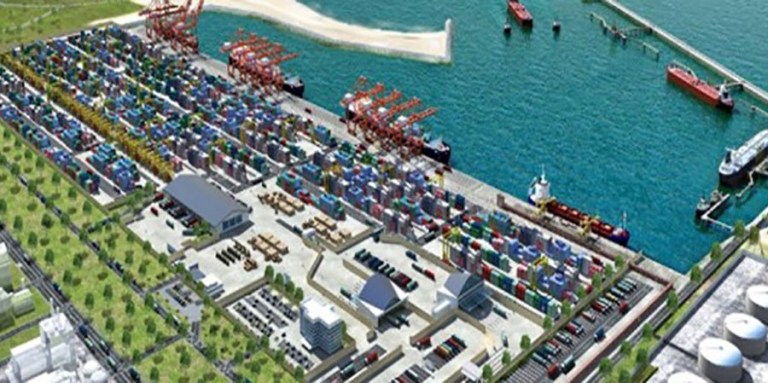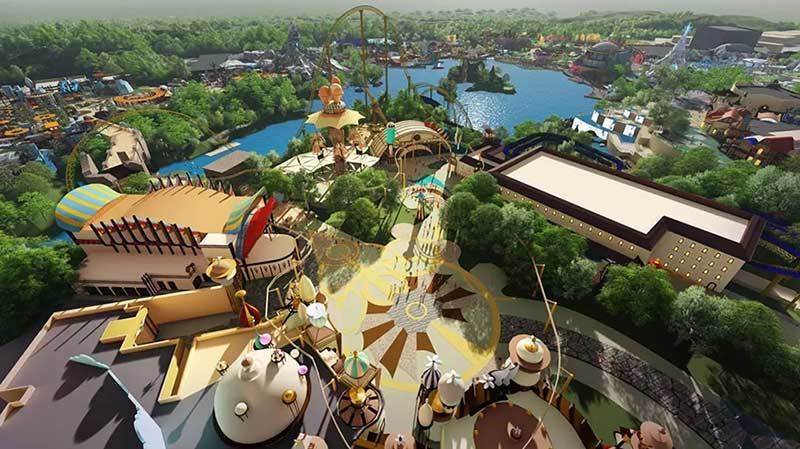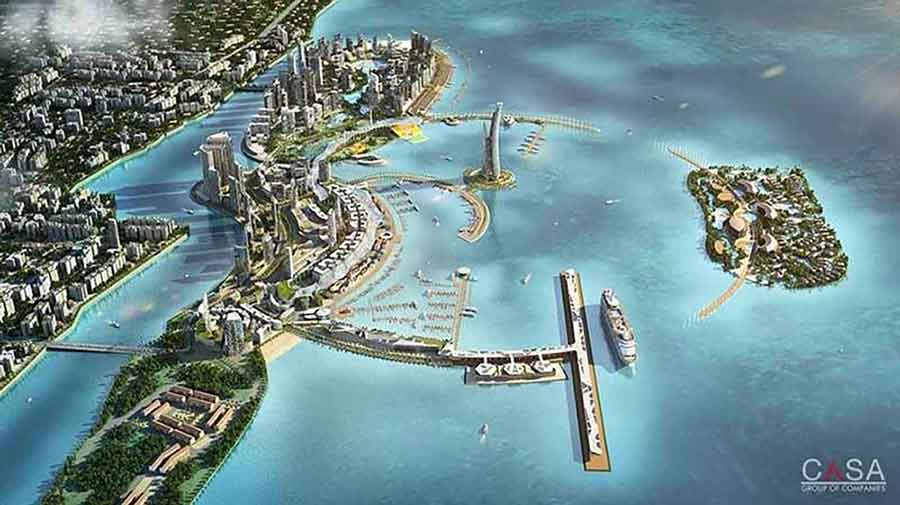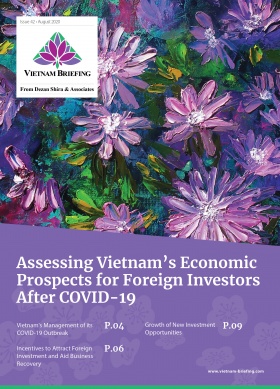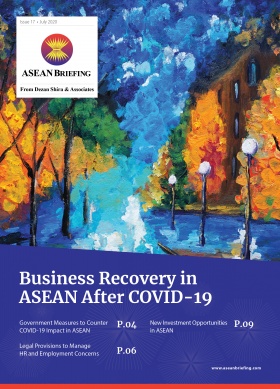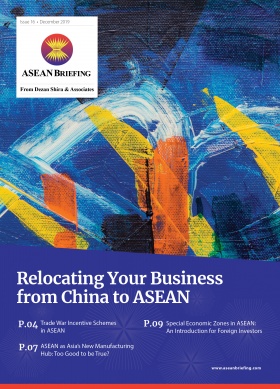Five Belt & Road Projects in ASEAN that SME Investors Should be Looking at for Opportunities
Op/Ed by Chris Devonshire-Ellis
China’s Belt & Road Initiative officially kicked off in 2013, some seven years ago, under the initial title of ‘One Belt One Road’. That was later dropped as it became apparent that the scale of demand for projects would be rather more than single Eurasian and Maritime routes. While there has been some controversy over China’s financing and exporting of its construction SOEs to build these projects, many are now in the final stages of completion. Not all, such as power plants, will be accessible for any additional foreign investment as future management and operation of these facilities will be usually split between the sovereign Government and any involved Chinese contractors.
However, other projects offer foreign investors the ability to get involved by exploiting the infrastructure build. This includes property investments, transportation, waste and water management, power, and catering for human needs such as restaurants, catering, computer services, tourism, and business services, among others.We can examine five primary projects about to reach maturity in ASEAN as follows:
Electric & high-speed rail infrastructure
Laos
The country’s first railway — Connecting Vientiane with Bangkok & Kunming
The Vientiane–Boten railway is a 414 km (257 miles) 1,435 mm standard gauge, electric-powered railway under construction in Laos, between the capital Vientiane and the small town of Boten on the border with China, where it connects with China’s national rail network and the significant Kunming terminus. To the south, it will connect with the Thai railway network and lead to Bangkok and ultimately to Singapore. It is the first railway in Laos and is expected to be completed by the end of 2021.
Thailand
High-speed rail from Laos to Bangkok
Related to the Laos rail described above is the construction of a high-speed railway that will link Bangkok with Nakhon Ratchasima, and then extend to Nong Khai and connect with the Laos system.
Construction began in December 2017, however has suffered on/off delays with Thai authorities uneasy over the high-interest rates charged by Chinese financing, the track design, and even the need for the scheme. However, that uncertainty has now been put to bed; in September 2020 the Thai cabinet released a fresh portion of US$380 million cash to purchase Chinese-made bullet trains and tracks.
After years of stop/start on the 250 km high-speed rail link, Chinese Foreign Minister Wang Yi signed a deal in Bangkok in October 2020. This means that the first high-speed rail station in Thailand should be complete in 2021, with lines to enter service in 2024. The service should whisk commuters from Nong Khai to Bangkok in about 90 minutes. It currently takes over 8 hours.
Opportunities for small investors exist in both these projects in terms of service provisions to travellers and commuters on these routes. Real estate values in properties near these stations and those along the route will also rise.
Low-cost manufacturing facilities with Bay of Bengal export shipping access
Myanmar
Kyauk Phyu Special Economic Zone
The Kyauk Phyu Special Economic Zone (ကျောက်ဖြူအထူးစီးပွားရေးဇုန်) is a 1,600 hectares (4,000 acres) Burmese Special Economic Zone being developed on Ramree Island in Rakhine State, with work commencing in September 2013.
The project initially began as a joint venture between the Chinese and Burmese governments but has since transitioned to private developers. It is accessible to the Shwe gas field in the Bay of Bengal and possesses oil and gas terminals and pipelines for natural gas and oil. In addition to the Oil and Gas facilities, the SEZ provides additional facilities for export manufacturing businesses as follows:
- 250 million-ton capacity wharves to accommodate 300,000-ton freighters;
- Seaports;
- Railway and logistics park to store 10 million tons of goods;
- Industrial cluster (40 km²);
- Marine service industry (3 km²);
- Two marine docks to service regional shipping traffic and dismantle old ships for sale of materials;
- Processing and manufacturing industries (11 km²);
- Agricultural and aquatic products, gems, and wood; and
- Textiles, metal, plastics, car parts, and electrical appliances.
ASEAN’s six-star tourism complex
Indonesia
MNC Lido City
MNC Lido City is an integrated lifestyle residential, commercial, entertainment, and resort destination area of 3,000 hectares in Lido, Bogor, West Java which is next to the Provinces of DKI Jakarta and Banten, surrounded by a population of more than 70 million people. Located about 60 kilometers from Jakarta, MNC Lido City can be directly accessed via the Bocimi Toll Road just an hour away from Jakarta.
Set to be a world-class destination, MNC Lido City comprises of a theme park resort, international four-star, five-star, and six-star hotels, luxury villas and condominiums, PGA standard 18-hole golf course designed by Ernie Els, exclusive residences, retail, dining, entertainment, international circuit, university, movieland, and other supporting facilities.
A video of the facility can be viewed here.
ASEAN’s largest lifestyle and residential cruise ship resort
Malaysia
The Melaka Gateway
The Melaka (Malacca) Gateway is an off-shore development of artificial islands in Malacca, Malaysia. Development work began in February 2014 and is expected to be fully completed by 2025. Some parts of the facility are already expected to open once the Covid pandemic dies down.
The project consists of 12 precincts including residential, commercial, cultural, entertainment and lifestyle elements, and include the Gateway Entertainment Precinct, Malacca Marina & Cruise Centre, Malacca Historical Walk, Gateway Maritime Arena & Beacon, Branded Fashion District, International Theme Park, Malacca Cultural Walk, Waterfront Marina Villas & Resorts, Gateway Wellness & Lifestyle Precinct, Malacca Skyline Apartments, Lohas Park & Residences, and Eco Isle Resorts.
The 609-acre project will see the first phase attracting some 900,000 visitors during the first year of operations, including international cruise passengers. The first phase will include the Malaysia Eye, two hotels, several resorts, a heritage walk, a fashion district, and a marina terminal. The marina terminal alone will be able to handle three cruise ships at the same time.
Taking Advantage of the Infrastructure Build
These are just five of the Belt & Road projects that China invested in that are about to come to fruition. As the Chinese SOE contractors pack up their equipment and go off in search of new projects, their influence is restricted mainly to small equity holdings, while management of these facilities reverts to local control.
All, however, offer opportunities for both small and large investors to service the human needs of the people that will now be flocking to use them — and this is where the real benefit to investors lies in such BRI projects. We will be continuing to bring ASEAN Briefing readers up to date with these developments, and also provide business intelligence and market research facilities to clients. Please click here to obtain a complimentary subscription and here to talk to us about how to get involved and exploit the assets now coming onstream.
Singapore as a Southeast Asian business & investment hub
China’s Belt & Road Initiative is now throwing up completed infrastructure that now means foreign investors – who struggled to compete with China’s SOE’s and banks in the construction and loans required – can finally engage via bringing in the additional hardware, software, and services that such projects require.
This is an advantage as it means that investing in the opportunities that these projects bring doesn’t have to involve deals with Chinese SOE’s, purely the local government regulatory issues concerning foreign investment in these nations. All the are ASEAN member states, with nearby Singapore serving as the de facto regional finance and service capital. In fact, it makes good sense to utilize Singapore itself as a service centre for managing investments into BRI project completion opportunities in Southeast Asia. Our firm, Dezan Shira & Associates has a presence in Singapore as well as much of ASEAN and Asia and provides intelligence and support services to foreign investors throughout the region.
Related Reading
- The Most Influential Countries Across The Asian Belt And Road Initiative 2020
- Why Singapore is a Good Base for Establishing Financial Treasury Centers
About Us
ASEAN Briefing is produced by Dezan Shira & Associates. The firm assists foreign investors throughout Asia and maintains offices throughout ASEAN, including in Singapore, Hanoi, Ho Chi Minh City and Jakarta. Please contact us at asia@dezshira.com or visit our website at www.dezshira.com


